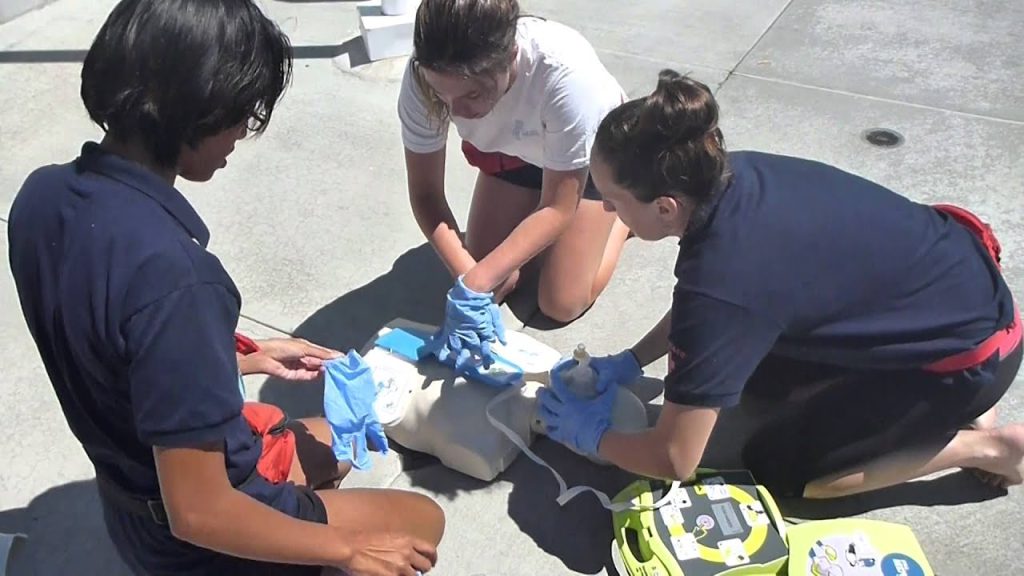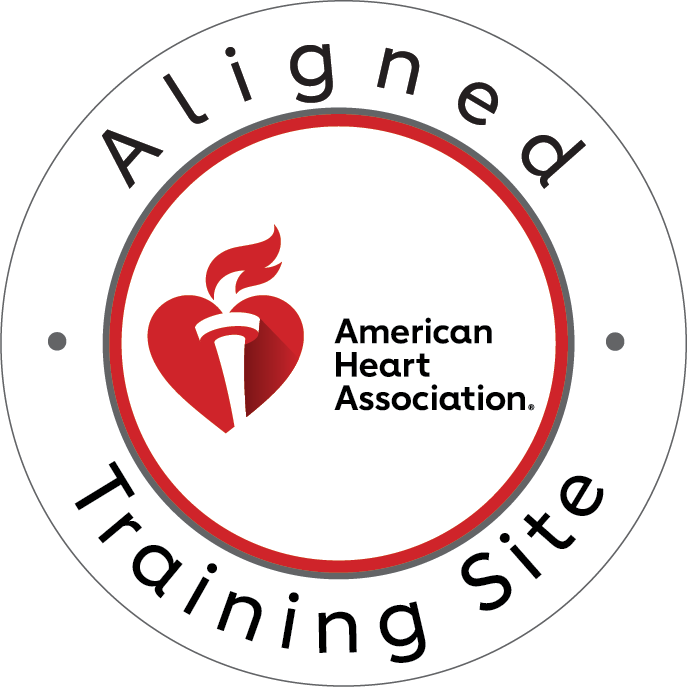Introduction
During cardiac emergencies, effective cardiopulmonary resuscitation (CPR) can mean the difference between life and death. However, rescuer fatigue poses a significant threat to CPR quality and patient outcomes. Understanding when and how to manage fatigue during resuscitation efforts is crucial for maintaining effective chest compressions and maximizing survival chances.
Understanding Rescuer Fatigue in CPR Performance
Rescuer fatigue during CPR represents a critical challenge that directly impacts the quality of life-saving interventions. Research demonstrates that fatigue sets in remarkably quickly during chest compressions, often within the first minute of continuous CPR performance.
A decrease in compression quality after the first minute of CPR is produced. This effect does not depend on gender, age, weight, height, or the rescuer’s profession, and it is not adequately perceived by the person who performs the chest compressions. This finding highlights a concerning reality: rescuers often remain unaware of their declining performance as fatigue sets in.
The physiology behind CPR fatigue involves multiple factors. Chest compressions require significant physical exertion, demanding sustained force generation to achieve the recommended compression depth of at least 2 inches (5 cm) in adults. The repetitive nature of compressions, combined with the stress of emergencies, accelerates energy depletion and muscle fatigue.
What Should You Do If You Become Fatigued When Performing CPR?
When fatigue begins affecting your CPR performance, immediate action becomes essential for patient survival. The primary response involves implementing a systematic rescuer switch protocol that maintains compression quality while allowing recovery.
Immediate Steps for Fatigued Rescuers
First, signal for assistance immediately when you feel your strength diminishing. Do not wait until compressions become ineffective. Second, prepare for a swift handoff by positioning the replacement rescuer alongside you. Third, execute the switch during a brief pause, typically lasting no more than 5-10 seconds.
The switch process requires coordination and practice. The incoming rescuer should position themselves opposite the fatigued rescuer, ready to assume chest compressions immediately. Communication during the switch should be clear and concise: “Switch on my count of three” ensures timing precision.
Maintaining Compression Quality During Switches
During the transition, focus on minimizing interruption time. Research shows that even brief pauses in chest compressions significantly impact survival rates. The incoming rescuer must immediately establish proper hand placement, compression depth, and rate without delay.
Quality indicators to monitor include maintaining compression depth of 2-2.4 inches, achieving rates of 100-120 compressions per minute, and allowing complete chest recoil between compressions. These parameters become increasingly difficult to maintain as fatigue progresses.
How Do You Avoid Fatigue in CPR?
Prevention strategies for CPR fatigue focus on preparation, technique optimization, and resource management. Proactive measures can significantly extend effective performance duration and improve overall resuscitation outcomes.
Physical Preparation and Conditioning
Regular physical fitness training enhances rescuer endurance during CPR performance. Cardiovascular conditioning, core strength development, and upper body strength training specifically benefit compression quality maintenance. However, even well-conditioned individuals experience fatigue during prolonged CPR efforts.
Team coordination plays a crucial role in fatigue prevention. Establishing clear roles, practicing switch protocols, and maintaining adequate staffing levels help distribute workload effectively. Multiple trained rescuers should be available for rotation, preventing any single individual from becoming excessively fatigued.
Technique Optimization Strategies
Proper body mechanics reduce energy expenditure and delay fatigue onset. Position yourself directly over the chest with arms straight and shoulders aligned above your hands. Use your entire body weight rather than just arm strength for compressions. This technique leverages gravity and larger muscle groups, conserving energy.
Maintain consistent rhythm and depth through conscious effort. Fatigue often leads to shallow compressions or irregular timing. Focus on complete chest recoil between compressions, allowing the heart to refill adequately while maintaining proper positioning.
Team-Based Fatigue Management
Implement systematic rotation schedules before fatigue becomes apparent. The rescuer fatigue switch group showed a significantly lower frequency of interruptions compared to standard timed switches, suggesting that monitoring for actual fatigue signs may improve overall CPR quality.
Designate a team leader to monitor rescuer performance and call for switches when compression quality declines. External observation often identifies fatigue signs before the performing rescuer recognizes them. This proactive approach maintains consistent compression quality throughout the resuscitation effort.
What Effect Can Rescuer Fatigue Have on Chest Compressions?
Rescuer fatigue dramatically compromises chest compression effectiveness, directly impacting patient survival chances. Understanding these effects helps emphasize the critical importance of fatigue management during CPR.
Compression Depth Deterioration
A reduction in CC depth was observed within each CPR episode, which may be indicative of fatigue during continuous CCs. Although a reduction of 3.28 mm throughout 2 minutes of CPR may be clinically insignificant, this effect was observed within a trained rescuer group. This finding demonstrates that even experienced rescuers experience measurable performance decline.
Adequate compression depth remains essential for generating sufficient blood flow to vital organs. Shallow compressions fail to create adequate perfusion pressure, reducing oxygen delivery to the brain and heart. As fatigue progresses, maintaining the required 2-inch minimum depth becomes increasingly challenging.
Rate and Rhythm Inconsistencies
Fatigue affects both compression rate and rhythm consistency. Tired rescuers often demonstrate irregular timing, with periods of rapid compressions followed by slower rates. This inconsistency disrupts the optimal hemodynamic effects of chest compressions.
The recommended compression rate of 100-120 per minute requires sustained concentration and physical capability. Fatigued rescuers frequently fall below this target rate, reducing cardiac output and compromising circulation to vital organs.
Incomplete Chest Recoil
Complete chest recoil between compressions allows venous return to the heart, maximizing the effectiveness of subsequent compressions. Fatigued rescuers often maintain excessive pressure during the recoil phase, preventing adequate venous filling and reducing compression effectiveness.
This incomplete recoil, combined with reduced compression depth, creates a compounding effect that significantly diminishes CPR quality. The result is markedly reduced blood flow compared to fresh rescuer performance.
Evidence-Based Guidelines for Rescuer Rotation
Current research supports frequent rescuer rotation to maintain compression quality. Various studies have found that rescuer fatigue can occur within one minute, coupled with a decay in the quality of chest compressions. These findings have influenced modern CPR protocols, emphasizing early and frequent rescuer changes.
Optimal Switch Timing
Studies comparing different rotation schedules guide optimal switch timing. While traditional protocols suggested 2-minute rotations, emerging evidence supports more frequent changes based on observed performance decline rather than arbitrary time intervals.
Individual variation in fatigue onset means that some rescuers may maintain quality compressions longer than others. Monitoring performance indicators rather than relying solely on time-based switches may optimize overall CPR effectiveness.
Training Implications
CPR training programs must incorporate fatigue awareness and management strategies. Rescuers need practice in recognizing fatigue signs, executing smooth switches, and maintaining quality compressions under stress conditions.
Simulation training should include extended CPR scenarios that allow participants to experience fatigue effects firsthand. This experiential learning helps develop realistic expectations and improved fatigue management skills.
Frequently Asked Questions
1. How quickly does rescuer fatigue affect CPR quality?
Research shows that compression quality can begin declining within the first minute of continuous CPR. The effect varies by individual fitness levels, but all rescuers experience performance degradation over time. Even highly trained professionals show a measurable decline in compression depth and consistency as fatigue sets in.
2. What are the warning signs that indicate a rescuer switch is needed?
Warning signs include visible exhaustion, sweating, decreased compression depth, irregular rhythm, incomplete chest recoil, and the rescuer expressing fatigue. Often, external observers notice these signs before the performing rescuer recognizes them, making team monitoring essential.
3. How many rescuers should be available for optimal CPR performance?
Ideally, at least 4-6 trained rescuers should be available to allow for regular rotation without compromising other resuscitation tasks. This number allows for two rescuers performing CPR (compressions and ventilations), while others manage the airway, prepare medications, and coordinate care.
4. Does rescuer size or fitness level significantly impact fatigue resistance during CPR?
While better physical fitness may delay fatigue onset slightly, studies show that fatigue effects occur regardless of rescuer characteristics, including gender, age, weight, height, or professional background. All rescuers benefit from regular rotation protocols to maintain compression quality.
Conclusion
Managing rescuer fatigue during CPR represents a critical component of effective resuscitation care. The evidence clearly demonstrates that compression quality deteriorates rapidly as fatigue sets in, often within the first minute of continuous performance. Healthcare providers must recognize fatigue signs early, implement systematic rotation protocols, and prioritize team-based approaches to maintain optimal CPR quality.
Effective fatigue management requires preparation, practice, and coordination. Teams that train together, establish clear rotation protocols, and monitor performance indicators achieve better patient outcomes through sustained high-quality compressions.
Take Action: Get Certified Today
Don’t let inadequate training compromise your ability to save lives. Whether you’re a healthcare professional or community member, proper CPR certification provides the skills and confidence needed to perform effectively under pressure.
CPR Memphis offers comprehensive American Heart Association training that includes fatigue management strategies and team-based CPR techniques. Our stress-free, hands-on classes cover BLS for Healthcare Providers, ACLS, PALS, and CPR and First Aid courses.
Ready to enhance your life-saving skills? Contact CPR Memphis today to schedule your CPR certification in Memphis or BLS certification in Memphis. Our expert instructors will ensure you’re prepared to provide high-quality CPR when it matters most.
Visit us at CPR Memphis – your trusted American Heart Association training site for the best CPR training in Memphis. Because when seconds count, proper training makes the difference.





